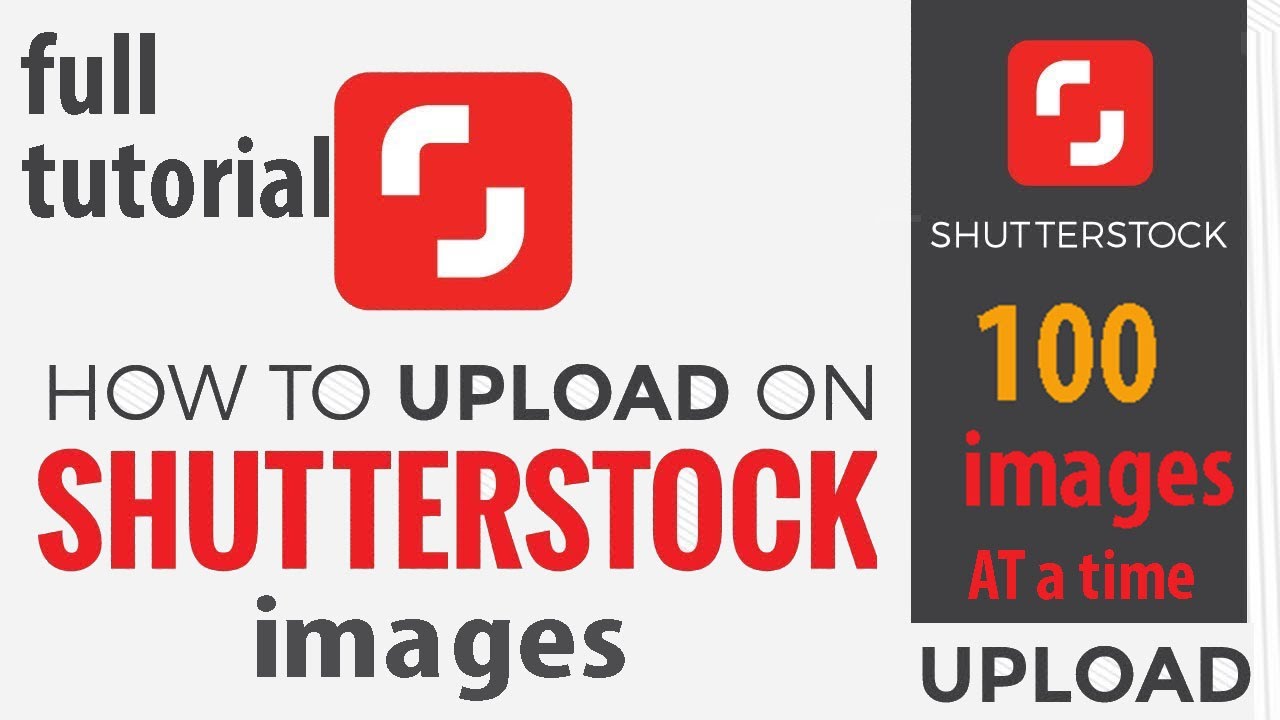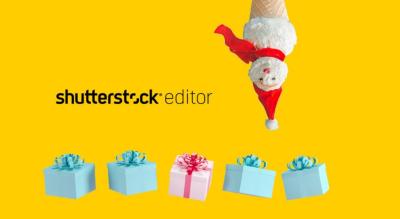If you’re working on a commercial project—be it a website, an advertisement, or a marketing brochure—finding the right images is crucial. Shutterstock is a popular platform with millions of high-quality images, but navigating their licensing options can feel overwhelming at first. You want to make sure you’re using images legally and ethically, without any copyright headaches down the line. In this guide, we’ll walk through how to purchase Shutterstock images for commercial projects, so you can confidently find and use stunning visuals that suit your needs and stay within legal boundaries.
Understanding Shutterstock Licensing Options
When it comes to Shutterstock, understanding their licensing options is key to making the right choice for your project. They primarily offer two types of licenses: Standard and Enhanced. Each has its own set of rules about how you can use the images, so let’s break them down:
Standard License
- Usage: Suitable for most online and print uses such as websites, blogs, social media, brochures, and presentations.
- Restrictions: You can use the image up to 500,000 copies or views. If your project exceeds this, you’ll need an Extended License.
- Limitations: Cannot be used for merchandise or products for resale (like T-shirts, mugs, or posters).
Enhanced (or Extended) License
- Usage: Designed for larger-scale projects, including products for resale, merchandise, or high-volume print runs.
- Restrictions: No limit on the number of copies or views, making it perfect for products or campaigns with broad distribution.
- Cost: Generally more expensive than the Standard license, but it offers more flexibility.
Key Points to Keep in Mind
| Feature | Standard License | Enhanced License |
|---|---|---|
| Use Cases | Websites, social media, brochures | Merchandise, large campaigns, resale products |
| Cost | Lower | Higher |
| Limit | Up to 500,000 views or copies | No limit |
| Resale Rights | No | Yes |
Choosing the right license depends on your project’s scope and how you plan to use the images. If you’re unsure, it’s always safer to opt for an Enhanced License to avoid any legal issues later. Remember, licensing isn’t just about legality—it’s about respecting the creators who produce these amazing images. So, take the time to understand your options and pick the best license for your commercial project!
Step-by-Step Guide to Selecting the Right Images
Choosing the perfect images for your commercial project can feel overwhelming, especially with so many options available on Shutterstock. But don’t worry—breaking it down into manageable steps makes the process much easier and more enjoyable. Here’s a simple, step-by-step guide to help you select images that not only look great but also align perfectly with your project’s goals.
Step 1: Define Your Purpose and Audience
Before diving into the image library, clarify what you want to communicate and who your target audience is. Are you creating a website, an advertisement, or a social media post? Is your target demographic young professionals, families, or business executives? Knowing this helps you focus on images that resonate most effectively.
Step 2: Use Specific Search Terms
Shutterstock’s search function is powerful—make it work for you! Use specific keywords that match your project’s theme. For example, instead of searching for “business,” try “team collaboration in office” or “creative startup workspace.” Use filters like orientation, color, and image type to narrow down your options further.
Step 3: Browse and Shortlist
As you browse, create a shortlist of images that catch your eye. Don’t settle immediately; instead, compare options to see which ones best fit your message and style. Pay attention to lighting, composition, and whether the images evoke the right emotion or tone.
Step 4: Check Image Licensing and Usage Rights
Once you find potential images, double-check that they’re suitable for commercial use. Shutterstock labels images with licensing details—make sure the license covers your intended use, whether it’s online, print, or advertising. Avoid any images that might have restrictions or require additional licensing fees.
Step 5: Consider Consistency and Style
For projects with multiple images, maintaining a consistent style is key. Look for images that share similar color palettes, themes, or moods. This creates a cohesive look across your entire project, making it more professional and polished.
Step 6: Evaluate Image Quality
Always choose high-resolution images that will look sharp in your final output. Avoid pixelated or blurry images, especially for print or large screens. Shutterstock images are generally high quality, but it’s good to verify before downloading.
Step 7: Make Your Final Selection
After considering all these factors, select the images that best fit your project’s needs. Remember, good visuals can elevate your message and make your project stand out. Take your time, and don’t rush this step—quality images are worth the effort!
How to Purchase Shutterstock Images for Commercial Projects
Now that you’ve selected the perfect images, it’s time to purchase them legally and confidently for your commercial project. Shutterstock offers several flexible options to suit different needs, whether you’re working on a one-off campaign or multiple projects. Here’s a straightforward guide to walk you through the purchasing process.
Step 1: Create a Shutterstock Account
If you haven’t already, sign up for a free account on Shutterstock. Having an account makes it easier to manage your downloads, track your license history, and access exclusive offers. Simply visit Shutterstock’s website and follow the registration prompts—it’s quick and easy!
Step 2: Choose Your Purchase Option
Shutterstock offers various licensing plans:
- On-Demand Packs: Buy a set number of images upfront—great for occasional use.
- Subscription Plans: Monthly or annual plans that give you a specific number of downloads per period—ideal for regular projects.
- Enterprise Solutions: Custom plans for large teams or agencies with high-volume needs.
Pick the option that best matches your project scope and budget.
Step 3: Add Images to Your Cart
On the image’s page, click the “Add to Cart” button. You can add multiple images to your cart before proceeding to checkout. Review your selections to ensure you’re getting the right images and licenses.
Step 4: Review Licensing Details
Before purchasing, carefully review the licensing terms for each image. Shutterstock’s standard license covers most commercial uses, including websites, ads, and print. If you need extended rights—like merchandise or products for resale—make sure to select an extended license option.
Step 5: Proceed to Checkout
Once you’re satisfied with your selection, click on the checkout button. You’ll be prompted to enter payment details. Shutterstock accepts various payment methods, including credit/debit cards and PayPal.
Step 6: Download Your Images
After completing the purchase, your images will be available for download immediately. Save them to your computer or cloud storage. Remember to keep a copy of your license information for future reference or legal compliance.
Step 7: Use Your Images Responsibly
With your images downloaded and licensed, you’re all set to incorporate them into your project. Always adhere to the licensing terms and avoid using images in ways that violate Shutterstock’s policies—this ensures you stay on the right side of copyright laws and protects your business from potential legal issues.
And that’s it! Purchasing Shutterstock images for your commercial projects is straightforward when you follow these steps. Now, you can confidently select and buy high-quality visuals that elevate your brand and help your message resonate with your audience.
Tips for Ensuring Proper Image Licensing and Usage
Getting the right license for your Shutterstock images is super important, especially when you’re using them for commercial projects. The last thing you want is to run into legal trouble because of a licensing mishap. Here are some practical tips to make sure you’re on the right track:
Understand the Different License Types
- Standard License: Suitable for most marketing, social media, websites, and presentations. It usually covers up to 500,000 views or copies.
- Enhanced License: Needed if you’re producing large quantities, using the images on merchandise, or in products for resale. It provides broader rights and higher usage limits.
Before purchasing, double-check which license suits your project. Shutterstock’s website provides clear descriptions to help you decide.
Read the License Agreement Carefully
Always take a few minutes to read the licensing terms. This helps you understand what you can and cannot do with the image. For example, some images might have restrictions on being used in sensitive contexts or in a way that could be considered defamatory.
Keep Documentation of Your Purchase
Save your purchase confirmation, license details, and any correspondence. This documentation can be helpful if questions about usage rights come up later. Shutterstock typically provides a license certificate with each download—save it for your records.
Use Images Within the License Scope
Be mindful not to go beyond what your license permits. For instance, if you’re using an image for a billboard, ensure your license covers large-scale commercial use. If in doubt, contact Shutterstock support or upgrade your license to a more comprehensive one.
Respect Model and Property Releases
If an image features recognizable people, trademarks, or private property, verify whether a model release or property release is included or required. This is essential for legal use in commercial projects.
Stay Updated on Licensing Changes
Licensing policies can evolve, so regularly check Shutterstock’s licensing terms. Staying informed ensures you’re always compliant with current rules.
Common Mistakes to Avoid When Buying Shutterstock Images
Navigating the world of stock images can be tricky, and even seasoned professionals can make mistakes. Here are some common pitfalls to watch out for—and how to avoid them:
1. Not Reading the License Terms Carefully
Assuming the license covers your intended use can lead to legal issues. Always read the license agreement thoroughly before downloading and using an image.
2. Using Images Without Proper Licenses
Downloading images without purchasing, or using free images in commercial projects without verifying their rights, can cause copyright infringement. Stick to images purchased through reputable sources like Shutterstock.
3. Overlooking Model or Property Releases
If a photo includes identifiable people or private property, ensure there’s a proper release. Using such images without releases can lead to legal claims.
4. Reusing or Altering Images Beyond Allowed Limits
Making extensive edits or creating derivative works that aren’t covered by your license can be risky. Confirm what modifications are permitted under your license.
5. Forgetting to Keep Records
Failing to save purchase receipts, license certificates, or correspondence can make it difficult to prove your rights if challenged. Always keep thorough documentation.
6. Ignoring Usage Restrictions
Some images might have restrictions on sensitive topics, political use, or certain industries. Ignoring these restrictions can lead to legal trouble or damage your reputation.
7. Not Checking for Updates or Changes
Licensing policies change over time. Make it a habit to review Shutterstock’s licensing info periodically to stay compliant.
By being vigilant and informed, you’ll avoid these common mistakes and ensure your commercial projects run smoothly, legally, and with confidence. Happy image hunting!
Conclusion and Final Tips for Successful Image Licensing
Successfully licensing images from Shutterstock for your commercial projects requires careful attention to detail and an understanding of licensing terms. To ensure a smooth process and avoid legal complications, keep the following tips in mind:
- Read the License Agreement Thoroughly: Always review the specific licensing terms associated with each image to understand usage rights and restrictions.
- Choose the Correct License Type: Shutterstock offers different licenses such as Standard and Enhanced. Select the one that best fits your project’s scope, distribution, and usage needs.
- Keep Documentation: Save copies of purchase receipts, license agreements, and image files for future reference and legal protection.
- Credit the Photographer if Required: Although not always mandatory, providing attribution can be a good practice and sometimes a license requirement.
- Use High-Resolution Files: Always download the highest quality version permitted, especially for print or large-scale projects.
For added assurance, consider creating a checklist to verify licensing requirements before finalizing your project. Remember, respecting copyright laws not only protects you legally but also supports the creative community behind the images you rely on. By following these tips, you can confidently incorporate Shutterstock images into your commercial projects, ensuring a professional and compliant outcome.



